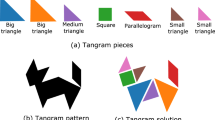Abstract
Outstanding bit error rate LDPC design in waterfall region and error floor region is one of the challenging tasks for the past decade. This chapter, focuses on the design of LDPC encoder with the low error floor and waterfall region of BER with minimum trapping set. Scheduled Progressive Edge-Growth (SPEG) LDPC encoder is used, and the simulation result of density evolution and exit chart are giving the better convergence of LDPC encoder. BER performance in error floor can controlled by minimum trapping set and waterfall region controlled by scheduled PEG LDPC encoder (1000, 500) with code length (n) is less than 600. The girth of the SPEG encoder is 8. SPEG with minimum trapping set will perform well for short length code also and it converges faster than the other PEG encoder.









Similar content being viewed by others
References
Anand, A., & Senthil Kumar, P. (2015). An efficient non-binary LDPC decoder with layer dynamic scheduling. Journal of Computational and Theoretical Nanoscience, 12(12), 5066–5070.
Anand, A., & Senthil Kumar, P. (2016). Scheduled progressive edge growth ldpc encoder with mimimal trapping set. Asian Journal of Information Technology, 15(13), 2162–2166.
Benamirouche, N., Boudraa, B., López-Oller, D., et al. (2016). Low complexity forward error correction for CELP-type speech coding over erasure channel transmission. International Journal of Speech and Technology, 19, 717–730. https://doi.org/10.1007/s10772-016-9365-1.
Declercq, D., & Fossorier, M. (2016). Channel coding theory, algorithms and applications. New York: Academic Press.
Gholami, M., & Esmaeili, M. (2012). Maximum-girth cylinder-type block-circulant LDPC codes. IEEE Transactions on Communications., 60(4), 952–962.
Healy, C., & Lamare, R. (2012). Decoder-optimized progressive edge growth algorithms for the design of LDPC codes with low error floors. IEEE Communication Letters, 16(6), 889–892.
Khazraie, S., Asvaldi, R., & Banihashemi, A. (2012). A PEG construction of finite-length LDPC codes with low error floor. IEEE Communications Letters, 16(8), 1288–1291.
Martines-Mateo, J., Elkouss, D., & Martin, V. (2011). Improved construction of irregular progressive edge growth tanner graph. arXiv:1007.3588v2[cs.IT].
Nguyen, D. V., & Vasic, B. (2014). Two-bit bit flipping algorithms for LDPC codes and collective error correction. IEEE Transactions on Communications., 62(4), 1153–1163.
Ramamoorthy, A., & Wesel, R. (2004) Construction of short block length irregularlow-density parity-check codes. In 2004 IEEE International Conference on Communications (Vol. 1). Paris, France.
Richardson, T. J., Shokrollahi, M. A., & Urbanke, R. L. (2001). Design of capacity-approaching irregular low-density parity-check codes. IEEE Transactions on Information Theory, 47(2), 619–637.
Richter, G., & Hof, A. (2006). On a Construction Method of Irregular LDPC Codes Without Small Stopping Sets. 2006 IEEE International Conference on Communications, Istanbul, Turkey, 1119–1124. https://doi.org/10.1109/ICC.2006.254897.
Savin, V. (2007). Iterative LDPC decoding using neighborhood reliabilities. In IEEE International Symposium on Information Theory (ISIT) (pp. 221–225).
Schmalen, L., Adrat, M., Clevorn, T., & Vary, P. (2011). EXIT chart based system design for iterative source-channel decoding with fixed-length codes. IEEE Transactions on Communications, 59(9), 2406–2413.
Sharon, E., Ashikhmin, A., & Litsyn, S. (2006). EXIT functions for binary input memoryless symmetric channels. IEEE Transactions on Communications, 54(7), 1207–1214.
Sharon, E., & Litsyn, S. (2008). Constructing LDPC codes by error minimization progressive edge growth. IEEE Transactions on Communications, 56(3), 359–368.
Sy, L.P., Savin, V & Declercq, D. (2011). Extended non-binary Low-Density Parity-Check codes over erasure channels. 2011 8th International Symposium on Wireless Communication Systems, Aachen, Germany. 121–125. https://doi.org/10.1109/ISWCS.2011.6125322.
Tian, T., Jones, C., Villasenor, J., & Wesel, R. (2004). Selective avoidance of cycles in irregular LDPC code constructions. IEEE Transactions on Communications., 52(8), 1242–1247.
Tian, T., Jones, C., Villasenor, J. D., & Wesel, R. D. (2010). Constructing short-length irregular LDPC codes with low error floor. IEEE Transactions on Communications, 58(10), 2823–2831.
Vukobratovi, D., & Senk, V. (2009). Evaluation and design of irregular LDPC codes using ACE spectrum. IEEE Transactions on Communications, 57(8), 22272–22279.
Wang, C., Chen, X., Li, Z., & Yang, S. (2013). A simplified min-sum decoding algorithm for non-binary LDPC codes. IEEE Transactions on Communications., 61(7), 24–32.
Xiao, H., & Banihashemi, A. (2004). Improved progressive-edge-growth (PEG) construction of irregular LDPC codes. IEEE Communications Letters, 8(12), 715–717.
Zheng, X., Lau, F., & Tse, C. (2010). Constructing short-length irregular LDPC codes with low error floor. IEEE Transactions on Communications., 58(10), 2823–2834.
Author information
Authors and Affiliations
Corresponding author
Additional information
Publisher's Note
Springer Nature remains neutral with regard to jurisdictional claims in published maps and institutional affiliations.
Rights and permissions
About this article
Cite this article
Anbalagan, A., Subramani, S., Kamalanathan, C. et al. Performance analysis of short length low density parity check codes. Int J Speech Technol 24, 615–624 (2021). https://doi.org/10.1007/s10772-021-09815-1
Received:
Accepted:
Published:
Issue Date:
DOI: https://doi.org/10.1007/s10772-021-09815-1




